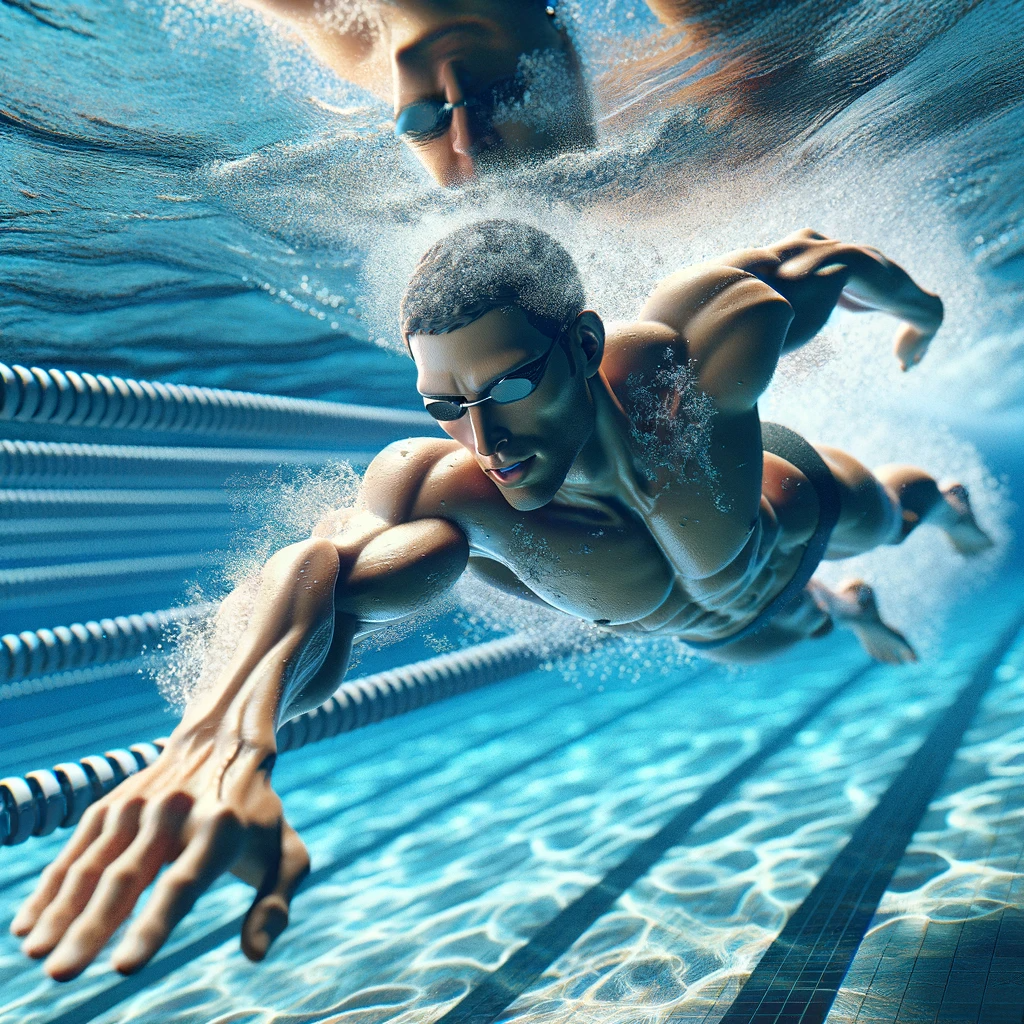Swimming, a skill cherished for its health benefits and recreational pleasures, is a mosaic of various strokes, each with unique technique and charm. Among these, one stroke stands out for its ubiquity and accessibility: the freestyle stroke. Freestyle is the most commonly used stroke in swimming, and we’ll explore its characteristics, advantages, and reasons for its widespread popularity.
The Essence of Freestyle Stroke
Freestyle, also known as the front crawl, is characterized by its efficiency and speed. It involves alternating arm movements with a flutter kick, and the face is typically in the water, turning to the side for breaths. This stroke is the fastest and the most efficient in energy expenditure, making it a preferred choice for swimmers of all levels.
Historical Background
The freestyle stroke has a rich history, evolving significantly over the years. Its origins can be traced back to the early 19th century. Still, it was the introduction of the ‘crawl’ technique by Australian swimmers at the beginning of the 20th century that revolutionized it. Their technique, involving flutter kicks and alternating overarm strokes, formed the basis of the modern freestyle stroke.
Versatility and Adaptability
One of the primary reasons for the popularity of the freestyle stroke is its versatility. It can be adapted to suit various swimming environments, from pools to open water. The freestyle stroke suits all, whether for competitive swimming, fitness, or leisure. Its speed and efficiency make it the go-to stroke for long-distance swimming, triathlons, and pool races.
Easier Learning Curve
Compared to other strokes like the butterfly or breaststroke, freestyle is relatively more straightforward to learn. This accessibility makes it a favourite among beginners, and it is often the first stroke taught in swimming lessons. While mastering the technique takes practice, the basic movements are straightforward, making it less intimidating for new swimmers.
Efficiency and Speed
In competitive swimming, speed is crucial, and the freestyle stroke provides just that. It allows swimmers to cover distance with less energy expenditure than other strokes. This efficiency is partly due to the streamlined position of the body, minimal drag, and the power generated from both the upper and lower body.
Health and Fitness Benefits
The freestyle stroke offers significant health and fitness benefits. It’s an excellent cardiovascular workout, strengthening the heart and lungs. The stroke engages multiple muscle groups, including the shoulders, back, legs, and core, providing a balanced full-body workout. It also improves flexibility and endurance, making it a preferred choice for fitness enthusiasts.
Recreational Appeal
Apart from its competitive and fitness advantages, the freestyle stroke is widely used for its recreational appeal. It is well-suited for casual swimming in a pool, lake, or ocean. Its ease of learning and the ability to swim longer distances without exhaustion makes it a popular choice for recreational swimmers.
The Role in Safety and Survival
Freestyle is often considered a vital stroke in terms of safety and survival swimming. Its efficiency and the ability to keep the head above water for regular breathing make it an essential skill for water safety. Many learn the freestyle stroke not just for fitness or competition but as a crucial life skill.
Freestyle in Swimming Instruction
Swimming instruction programs across the globe commonly begin with the freestyle stroke. Its straightforward technique and less strenuous nature make it an ideal starting point for learners of all ages. This widespread teaching further cements its status as the most commonly used stroke.
The Influence of Technology and Training
Advancements in swimming technology and training have also favored the freestyle stroke. From developing high-tech swimsuits to refining stroke techniques using video analysis, the focus has often been on enhancing freestyle performance. This emphasis in competitive swimming has trickled down to recreational and fitness swimming, further popularizing the stroke.
Limitations and Challenges
While freestyle is widely used, it has its challenges. Proper technique is crucial to prevent injuries, particularly shoulder injuries due to repetitive motion. Also, breathing techniques in freestyle can be challenging for beginners, requiring practice and proper instruction.
Integrating Other Strokes
Experienced swimmers and coaches often recommend integrating other strokes into swimming routines. While freestyle may be the most commonly used, strokes like backstroke, breaststroke, and butterfly offer varied health benefits and can help develop a more balanced swimming technique.
The freestyle stroke’s combination of efficiency, speed, and accessibility makes it the most commonly used stroke in swimming. Its adaptability for competitive swimming, fitness regimes, and recreational activities further adds to its popularity. While it is relatively easy for beginners to learn, mastering the freestyle stroke requires practice and dedication. A balanced approach that includes various strokes and techniques is beneficial, as with any physical activity. Nevertheless, the freestyle stroke remains a fundamental and beloved part of the swimming world, embodying the essence of swimming for people across all walks of life.
